To get from Naha to Kagoshima you can fly or you can get a 25 hour overnight ferry. I decided on the Naha Kagoshima ferry option.
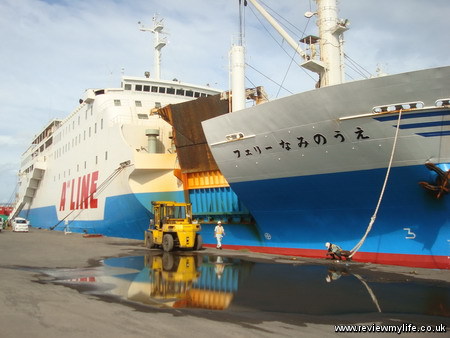
Naha Kagoshima ferry tickets
It cost ¥16,200 for the one way journey, staying in a shared cabin with 8 bunk beds. ¥14,200 was paid when I booked the ferry at the KNT travel agent in Japan. And ¥2000 was to be paid at the ferry terminal as a supplement for having a room, rather than sleeping on the floor. I booked in advance, but you can buy tickets on the day as well. I think the ferry had plenty of free space when I went (early August) – especially in the cabins.
My day started early as I had to be at the ferry terminal between 6am and 6:30am to check in. Naha has quite a few ferry terminals on this side of the island. My ferry was leaving from Naha port near Asahibashi monorail station.
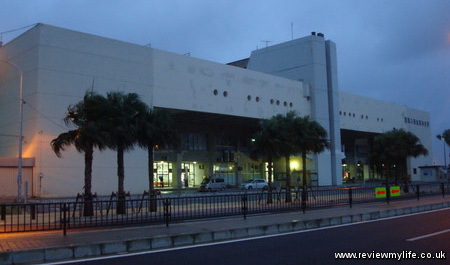
Inside I went to the check-in area.
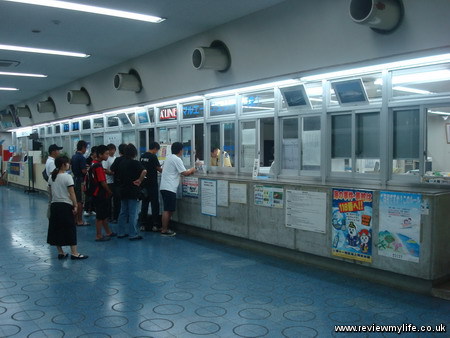
At the check-in I had to present my booking confirmation and fill in a form (‘Boarding Application’) with my name and a few other details. I had to ask the person behind the counter for a cabin, and then I paid the extra ¥2000.
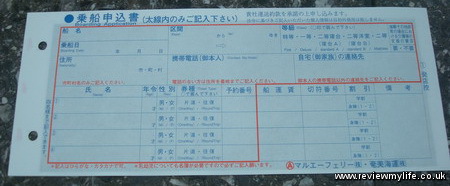
No one seemed to speak English here, and all the signs were in Japanese, so make sure you get here early so you can get everything sorted.
After I had filled in the form I got my boarding pass. The bits at the front get you onto the boat. And the yellow bit at the back shows that I have paid extra for the cabin.
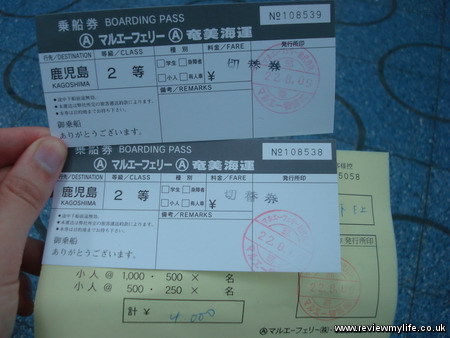
Boarding the A-Line ferry
Boarding was at 6:30am so I still had a little time to wait. There is a shop inside the port building if you need any last minute food or drink. At about 6:30am I queued up with the others to get on the ship.
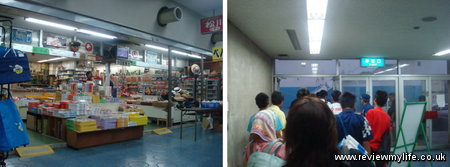
It was raining and very windy so I had to make a run for it across the concrete to the ships stairs, and then get up the stairs as fast as I could!
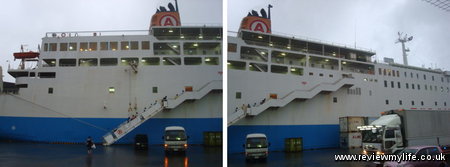
This ship was the フェリーなみのうえ (Naminoue Ferry).
A-line ferry cabin
Inside I showed my ticket to one of the staff. He told me where the room was in Japanese, but as I didn’t quite understand he lead me to where it was. They don’t give you a room key, the room just stays unlocked the whole time. This is the inside of the room. Not visible in the picture on the ceiling is a control for the air conditioning, and another for the speaker volume. I recommend you set the volume to ‘1’ so you hear the announcements without being startled.
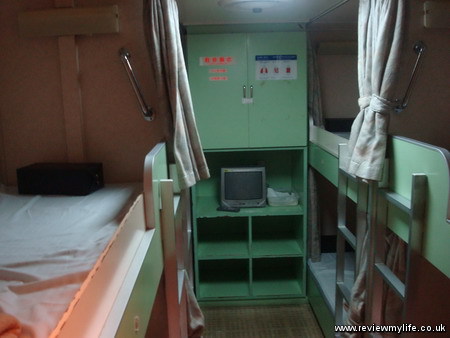
Here is a closer look at one of the beds. There is a light, a hook, a fold-up net shelf, a blanket, and a black leather looking box.
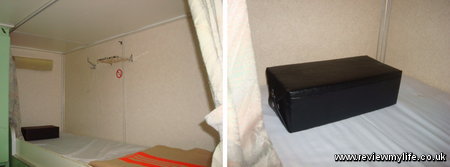
That black box is your pillow! It is fairly solid, and feels higher than a normal pillow. As it was quite hard I found that I couldn’t lie on my side as it squashed my ear! They do supply paper covers for the pillows for ‘hygiene reasons’, but I found it more comfortable to put the pillow in an old t-shirt. At this stage of the journey I was the only one in the cabin.
If you don’t want to pay the cabin supplement then you get to sleep in one of the large communal sleeping rooms. Each space is numbered so you’ll know which one is yours.
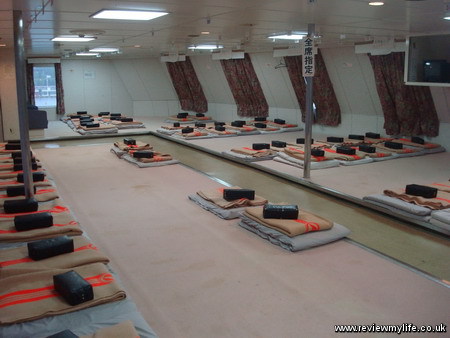
Sailing from Naha on the A-line ferry
Then the ship set sail. There isn’t very much to do for the 25 hours. You can walk on the deck, there is an upstairs deck as well.
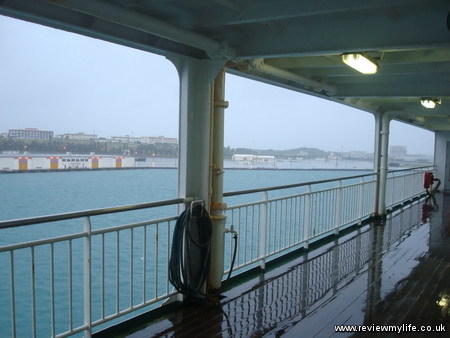
You can sit on the seats or carpet watching the sea.
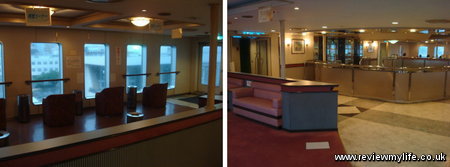
Or you can walk around the two main floors. The upper floor had the cabins and a few communal sleeping rooms. The lower floor had the reception, ship, vending machines, some arcade games, and another sleeping room.
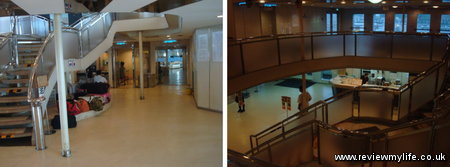
Food on board
Canteen style meals are served in either the main restaurant, or the breakfast restaurant. You can buy ramen, curry rice, udon, plain rice, tofu and salad.
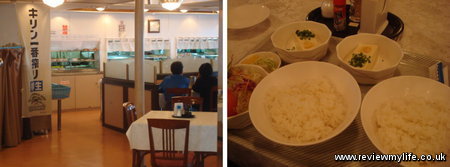
You can also get food and drinks from the small shop and vending machines.
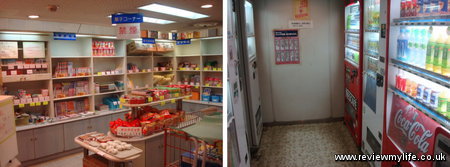
The overall food selection isn’t great so you might need to bring some of your own food.
Loading / unloading
Every three to four hours the boat would pull into another island. Once docked people would leave or board. Fork lift trucks would spring into action taking cargo crates on and off the boat.
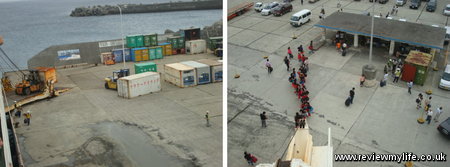
Before the last stop of the day a member of the crew came into my cabin and told me that someone else would be joining. Twenty minutes later a Japanese man came in and claimed his bunk.
I got quite a good sleep on the ferry, much better than my experience on the overnight Bari to Patras ferry that I took some years ago. From that experience I’d learnt that bringing an eye mask and ear plugs is a good idea if you have to share your sleeping space with strangers. Fortunately the Japanese man was very quiet, and the rocking motion of the ship sent me to sleep.
Arriving at Kagoshima
On the reception they update a notice saying when the ship will dock in the next port. Kagoshima was the last stop. The ship was supposed to get into Kagoshima at 8:30am and at 8:40am I was able to leave the boat. I had to give my tickets to a man on the way out – so don’t throw them away when you get on.
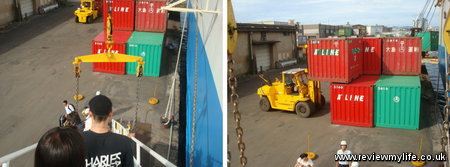
Outside the ferry was a paid shuttle but that took me to Kagoshima JR station.
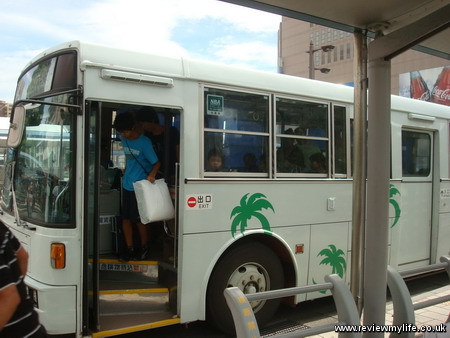
One word of warning – after being on a rocking boat for 25 hours I found that I were a bit unstable on my feet for the morning and a bit into the afternoon once I’d disembarked. It was as if I was still on a rocking boat. Allow yourself a bit of time to adjust to solid land again.
More information
More details on the Naha to Kagoshima ferry route are available from the A-line ferry website. You might also hear this company being referred to as ‘Marue Ferry’ group. Specific information on the ship I sailed on can be found here. Using Google Translate may help to make more sense of it.
We went on the shorter naha ferry and found it fantastic! The ride was about one-two hours and we enjoyed ourselves. My family and I will be back soon and definitely, will be riding this ferry again.
Hey thanks so much for this post! As the south island ferries aren’t that commonly used by foreigners (I think?), there isn’t much information available in English. Your pictures of the tickets, rooms, and facilities are particularly helpful! I wouldn’t have guessed that the black leather box is a pillow – at first glance it looked like a safe. Did you carry your belongings around with you when leaving your room? They say theft is rare in Japan, but I wouldn’t want to be naive. Also, do you know if the fare is less for traveling to the in-between islands? Thanks in advance for any tips you can share :)